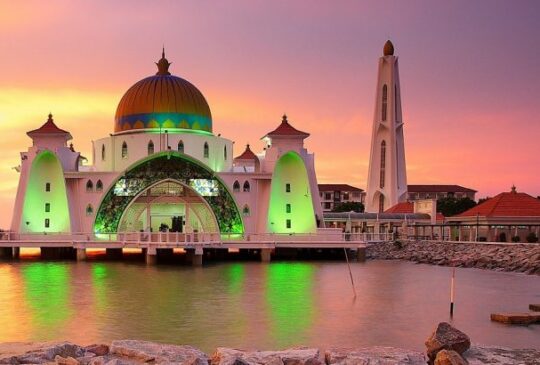Malaysia
Overview of Malaysia
1. Geography
- Capital: Kuala Lumpur
- Area: Approximately 330,803 square kilometers (127,724 square miles).
- Regions: Malaysia is divided into two main regions: Peninsular Malaysia (West Malaysia) and East Malaysia (on the island of Borneo).
- Landscape: The country features a mix of coastal areas, rainforests, mountains, and urban centers.
2. Political Structure
- Malaysia is a constitutional monarchy with a parliamentary system.
- The country is made up of 13 states and 3 federal territories.
- The king, known as the Yang di-Pertuan Agong, is elected from among the nine hereditary rulers of the Malay states.
3. Economy
- Malaysia has a mixed economy, with significant contributions from agriculture, manufacturing, and services.
- Key exports include palm oil, electronics, petroleum, and rubber.
- The country is one of the world’s largest producers of palm oil and is known for its vibrant manufacturing sector.
4. Culture
- Malaysia is a multicultural society, with a mix of Malay, Chinese, Indian, and indigenous cultures.
- The country celebrates various festivals, including Hari Raya, Chinese New Year, Deepavali, and Christmas.
- The official language is Malay (Bahasa Malaysia), but English is widely spoken, especially in urban areas.
5. Tourism
- Malaysia is a popular tourist destination, known for its diverse attractions ranging from modern cities to natural wonders.
- Key tourist destinations include Kuala Lumpur (with the iconic Petronas Twin Towers), Penang (known for its heritage and food), Langkawi (a tropical paradise), and the Cameron Highlands (famous for tea plantations).
- The country is also home to beautiful national parks, such as Borneo’s Danum Valley and Taman Negara.
6. Transportation
- Malaysia has a well-developed transportation infrastructure, including a network of roads, railways, and airports.
- Kuala Lumpur International Airport (KLIA) is the main international gateway.
- Public transportation options in cities include buses, light rail, and taxis.
7. Climate
- Malaysia has a tropical climate, characterized by high humidity and temperatures averaging 25-32°C (77-90°F) year-round.
- The country experiences two monsoon seasons: the Southwest Monsoon (May to September) and the Northeast Monsoon (November to March).
8. Education and Healthcare
- Malaysia has a relatively high literacy rate and a growing education system, with numerous public and private universities.
- The healthcare system includes both public and private providers, with a focus on improving access to healthcare services.
Conclusion
Malaysia is a vibrant and diverse country with a rich cultural tapestry and a variety of attractions for visitors. Its unique blend of modernity and tradition, along with its stunning natural beauty, makes it an appealing destination in Southeast Asia. If you have specific questions or need more information about a particular aspect of Malaysia, feel free to ask!


